Welcome to 2018, a time when Americans carry $1.4 trillion in student loan debt, accruing $2,858 of additional debt PER SECOND. The average student debt is about $38k right now, and the number of people over the age of 60 with student loan debt has quadrupled in the last 10 years from 700,000 to 2.8 million. Debt, it seems, can enslave for quite a long while. And we haven’t even started talking about consumer loans and credit cards…
Our story was both fortunate and had some typical characteristics. We have two Ivy League undergraduate degrees between my wife and I and we both have terminal degrees in our fields (she’s a physician, I went to business school). We owe much gratitude to parents who helped immensely with our education costs. However, when it came time to fund the graduate work, the lenders were just circling the water, waiting for us to bleed. And bleed we did… until we started using these great four steps below (and they’re not just for student debt! Apply these to any kind of debt and see huge gains!).
So, Imma GIVE YOU the four steps that we took to pay back $180k in student loan debt in 4 years. And it will only cost you $19.95! (…j/k, we’re not like those predatory finance companies. I’ll give it to you gratis. You deserve to know, and get on with the family building God wants you to do.) Certainly our path had its unique components, but my hope is that this gives you some vision to create a plan for killing your student loans as quickly as possible, and with all the firepower of a Mexican luchador leaping from the corner turnbuckle with a Bowie knife in his teeth and a pit bull under his arm. (This is a truly glorious visual and if anybody wants to commemorate it with an oil painting—or, heck, a vector graphic—we are ALL FOR IT.)
Step 1: Make the payments as small as they can be
Isn’t this obvious? If you have federal or private student loans, there’s a very good chance that you can refinance them at a lower interest rate and significantly reduce your payments. Even though you’re reading this because you’re ready to attack your debt with vigor and thus will be making much more than the minimum payment, lowering that minimum will increase the amount of money that goes into reducing the principal on your loans. Don’t stop for tacos, don’t even pray about it—except to thank God that you’re taking this crucial step. Just do it as soon as humanly possible.
[An aside: Since most of our student loan debt was medical school related, the loans were at a federally-mandated 6.875% interest rate. I had been told that there were benefits to not refinancing these loans with a private company, such as loan forgiveness programs and the fact that if anything happened to the debtor these loans would go away (unlike a private loan). Once it became clear that we would not be joining a practice that qualified us for loan forgiveness, it was obvious that I could get a much better deal by lowering my interest rate and just bumping our life insurance enough to cover the debt in the event of an untimely demise. Regardless of your debt type, do a quick check to make sure you won’t kill any important benefits by refinancing, but also, as we did, be sure that you’re not dragging your feet for the sake of a benefit you’ll never use.]
There are a few great options when it comes time to refinance your student loans… (that time is NOW, did I mention that?) The company we used is called Earnest and I love their rate calculation algorithm, which focuses not on your credit score but on your actual habits. It’s kinda cool and it works like this: You connect your accounts just like you would with a budgeting tool such as Mint, and Earnest goes and looks at your lifestyle and spending habits and sometimes finds out that your actual risk profile is higher or lower than your credit score would indicate. Because we tend to live well below our means (Abrahamic!), they could see that we were going to have no trouble paying their silly minimums, and they gave me the best possible rate (which was less than 4%… way better than 6.875%). The mobile app and website were also very slick, and on the one or two occasions that I needed some help they were pleasant to deal with.
The other refi option that I recommend is SoFi. SoFi spans a slightly broader spectrum of lending and wealth management, so they might have what you need that Earnest is missing. I have friends who are current clients of SoFi and say good things, and their rates are comparable to those of Earnest, but my recommendation comes second hand as I have not used SoFi to refinance any of my own student loans.
Both companies offer refinancing for a whole host of loan types, so check them out even if your debt is not related to student loans. If you do decide to refi your loans, using our links for Earnest and SoFi does generate some income for ye old Abrahams Wallet (and for this we say a humble but excited Gracias!).
Step 2: Increase Income, Decrease Expenses
Deep in the throes of loan-paying, this is NOT the time to quit your well-paying job and pursue your dream of becoming a spangled Broadway singer via internet videos. Now is the time to earn some serious money, ol boy, so that you can remove the millstone of debt from roundest your family’s neck. “And how, pray tell, might I do that?”, you ask, with hands on hips and a cocked eyebrow. I’m going to overlook the dubious attitude and give you the answer anyway:
- Ask for a raise – transparency with your employer that you’re getting serious about your student debt can, in many cases, be both prudent and effective. If you’re even slightly under compensated in your current role, now is the time to change that. As a manager of people in an office setting, it’s always a bit remarkable how rarely my employees ask for more money, and when they do I generally, as a boss who wants to keep them around, look for ways to make it happen.
- Consider a job switch – If you ask for more money and get turned down, and you’re worth more in the market than you’re making, go shop yourself to a few new employers. Again, your priority at the moment is debt paydown, and your salary will be the primary source of those funds, so max it out!
- Take up a Productive Hobby, or monetize your current one. (Did you know you can get paid to have fun? I wrote an entire post about it over here.
- Offer your services as a consultant – Earlier in my career I had often written articles and spoken at other companies to build my brand as a leader in my field of expertise. When we decided to get serious about our debt, I called up a few of those places and offered to help them out on a deeper level for a few hours a week as a consultant, at a premium rate. I got a few takers! If you’re just starting out in this area, writing and looking for opportunities to mentor others will almost certainly lead to consulting opportunities in the future if you’re good at it.
But wait, it’s not all about increasing income. For many of you, spending reduction will be the golden ticket to debt freedom. This list could go forever, but here are just a few considerations:
- You need a budget – even thinking about paying down significant student loan debt without a budget is crazy talk
- Chop your grocery bill in half, it’s likely one of your larger spending categories
- Do a quick subscription audit – do you need HBO, Netflix, Hulu and (barf) cable TV? In fact, you need none of those! You may decide to hang onto one, but a quick audit of all the services that you pay for regularly could find you $10, $50 or even several hundred dollars per month in savings. Odds are that you’ll find at least one service that you had forgotten you even signed up for in the first place (oh hi LinkedIn Premium).
- Take spending breaks (have you ever heard of LoDoFeb?) and teach your family that life can be wonderful on a low spending diet.
The key to increasing your income will be PUTTING THE DIFFERENCE TOWARD YOUR DEBT. The key to reducing your spending will be (wait for it) PUTTING THE DIFFERENCE TOWARD YOUR DEBT. This isn’t a post about self-discipline, diligence, or patience… but brother you’re going to need them. I suggest you not only be persnickety about debt pay down, but to celebrate every hurdle you clear on your way to freedom. It won’t be quick nor easy… but you can do it, you mountain of a man!
Sorry I got a little carried away, there. You probably want the other two tips.
Step 3: Take calculated, backstopped risks
The single biggest accelerator to our student loan debt paydown plan was an investment gone very good. We found a home in the nicest part of Salt Lake City that was significantly underpriced, and we pounced on it. Now, I got some sideways looks from my friends and advisors when I made this move – why were we moving to the fancy neighborhood when we still had student loans? Good question. As I saw it, we might be able to double the value of this house with some sweat equity, some money and a few years. We couldn’t pay it off quickly or anything like that; in fact, we only put down 5% when we purchased it.
By that logic couldn’t we have done the same thing in Vegas at the roulette wheel? Here’s where backstops are important. Before I made this move, I made sure that I had enough funds to weather a suboptimal outcome. I expected the house to double in value, but I also lived through 2008 and knew that it could lose half of its value. If that happened, I had already done the work to be sure that I wasn’t going to be financially broken by this negative scenario. Nor would I be stuck living in Utah unable to move if we felt called off to another locale (this would be allowing our money to lead us – a no no for the multigenerationally-minded steward). My backstop was enough liquid assets to sell the home even if it decreased precipitously in value. My calculated risk was to hang onto those funds and use them for this purpose instead of dumping all my free cash into my student loans and living in a cheaper house. That would have been fine, but by taking a calculated risk I paid off my debt in 4 years instead of 10 or 11. Yahoo!
As you may have guessed, the home DID in fact double in value. We did a combination of DIY and professional renovation work to make it great, and the result was that we were able to pay the remainder of our student loans, car loans and most of the cost of our next home with the profits from the sale of this house.
Step 4: Don’t push pause on life
There is a fervor for debt reduction, evident in MANY personal finance blogs, that can lead you to unhealthy decisions. Avoid that path by keeping your eyes set on what is truly valuable. In the 4 years that we became serious about dethroning our debt overlord, we had two more children, took some great vacations as a family, gave freely to a variety of ministries and causes, spent money each year on our annual goals summit, hosted some pricey celebrations and generally pursued gain in all five capitals, trading money for more valuable assets whenever possible.
When I hear someone tell me that they are waiting to start a family until they’ve paid down debt, I want to shake them. Just as debt can enslave you, the desire to aggressively pay down your debt can become its own idol and… enslave you all the same. Your job is to steward the resources that have been entrusted to you – time, money, skills, children, etc. Sometimes that means a protracted and faithful march towards debt freedom, other times it means a hyper-aggressive assassination of your debt. Either way, keep this corner of your financial and family life in its proper place and obey the Father!
So there you have it – this was the path we walked to pay down our student loan debt. We made some changes to our spending, upgraded to a higher paying job, and combined productive hobbies with consulting gigs to move our monthly payment from the minimum of almost $3k to about $6k per month. Clearly not everyone can pay $6k per month… but not everyone has $180k of student loans either. While we plugged away at our student loans through this aggressive repayment plan, we also took a calculated, backstopped risk that cut our planned repayment time in half.
Have you got a similarly crazy story of busting some debt to bits? Are you stuck at the foot of a mountain of debt trying to get started? Tell us about it below!
*Mark Parrett is one of the founders of Abraham’s Wallet. When not blogging for you here, he’s raising a family in Salt Lake City, UT and working as a financial planner at Outpost Advisors.







Thank you for this! I am a 4th year medical student currently applying to residency, so this is BEYOND helpful! Luckily my husband is not in medicine and has a normal job, and we’re working really hard to have a wise budget (luckily we were both already decent at this, but after getting married we really looked closely at our spending.) Also, mostly as a result of Crossroads’ Obsessed journey, we have found ourselves giving way more to the church than we ever thought we could in our first year of marriage. It’s awesome! But we’ve also had a few moments where we’ve realized we probably need to dial it back a little next year, especially if we aim to pay off my debt in 4-5 years, which we do!
How do you think about your slush money…where to give beyond basic tithing, where to invest, where to kill that debt as fast as possible? Tithing 10% is a no brainer for us, but how do you think through the rest?
Thanks guys!
I’m replying to this so that you’ll know I put an answer in… see below!
Hey Stephanie – sorry I missed this comment! Have you read our article on budgeting the slush?
It’s here: https://abrahamswallet.com/2018/04/04/do-you-have-a-slush-plan-budgeting-201/
I think that’s my best shot at where we put the slush, although in the residency years that slush was quite limited. Hope this is helpful hit me up anytime if we can be more helpful with specifics!